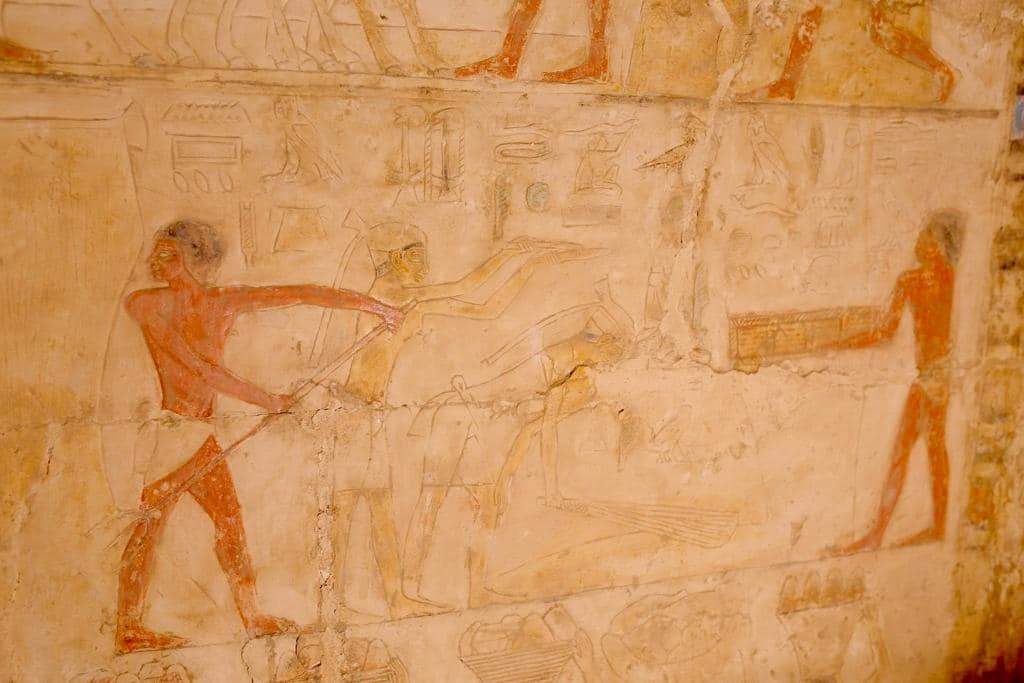Egypt ’s sand dunes never cease to amaze us: that desert thousands of years and decades of cables later continues to make unique and extraordinarily valuable discoveries. The latest was unveiled with pomp and circumstance by the Minister of Tourism and Antiquities, Ahmed Issa, together with the chairman of the Supreme Council for Antiquities, Mostafa Waziri: this is the largest human and animal embalming laboratory ever found.
The discovery was made known just behind the excavations, 30 km from Cairo, in Saqqara, where it was explained in great detail. The environment was found to be in very good condition and thus allows us to gain tremendous insight into the techniques used at the time by the Egyptians also thanks to a whole series of artifacts found on site as well as two wells. The first and largest repository was discovered in the Bobastian necropolis and dates back to the late period and contains 150 bronze statues of ancient Egyptian deities, including Anubis, Amun, Min, Osiris, Isis, Nefertum, Bastet, and Hathor, and 250 closed sarcophagi made of colored wood containing mummies in good condition. In addition, a papyrus in good condition was found inside one sarcophagus, containing chapters from the Book of the Dead (one of the ancient Egyptian religious books). While another 50 sarcophagi were found outside the wells.
We are in the necropolis of Saqqara, south of the Egyptian capital, and here is the largest stone building in history: the Step Pyramid of Djoser. A place from which we should also expect much more since Minister Ahmed Issa said the surprises do not end there. Authorities explained that the two workshops date back to the 30th Dynasty and Ptolemaic periods while the two tombs fall in the Old and New Kingdom. “I witnessed their hard work during my visit last month,” the minister said in the statement that went around the world , “to the Necropolis of the Sacred Animals (Bobastian) to verify the work done and met with the mission workers who revealed this new discovery. I assure you that Egypt, particularly the archaeological site of Saqqara, has not yet revealed all its secrets, and there are many more to come.”
The laboratory for embalming and mummifying human beings is described in detail: “rectangular in shape, it is divided inside into several rooms equipped with stone beds where the deceased was laid for mummification. Each bed is two meters long and 50 cm wide covered with plaster and ending with drainage channels.” Inside each laboratory room was found “a collection of clay vessels, including those used for mummification, as well as a collection of ritual tools and vessels.” As for the laboratory intended for the embalming of “sacred animals,” it was explained that it has a rectangular shape like the one for humans and is made of mud with stone floors, “formed by a group of rooms inside which also was found a collection of clay vessels and animal burials along with bronze tools used in the mummification process.”
The earliest datable find is a tomb attributed to a high official of the Fifth Dynasty, (c. 2400 B.C.), named Ne Hesut Ba, who was the chief scribe and the priest of Horus and Maat. There is also the tomb of a priest, Qadish called “Men Kheber” of the 18th Dynasty (1400 B.C.), explained Sabri Farag, general director of the Saqqara archaeological site. The Old Kingdom tomb, of the “mastaba” type, has a facade painted on stone with the names of the deceased and his wife, an architrave with the different titles of the couple, and paintings with scenes of daily life, cultivation and hunting. The New Kingdom tomb is carved into the rock and also has a door and lintel decorated with the names of the deceased and his wife.
 |
| Egypt, largest known mummification laboratory discovered |
Warning: the translation into English of the original Italian article was created using automatic tools. We undertake to review all articles, but we do not guarantee the total absence of inaccuracies in the translation due to the program. You can find the original by clicking on the ITA button. If you find any mistake,please contact us.